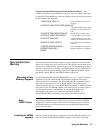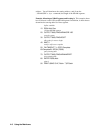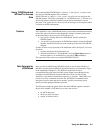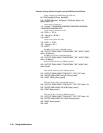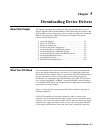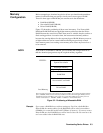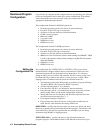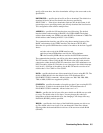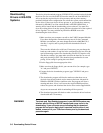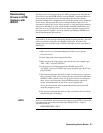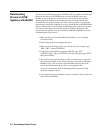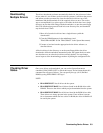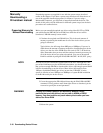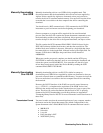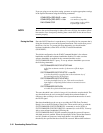specify a file name here, the driver downloader will log to the screen and to the
specified file.
DRIVER FILE = specifies the driver file or files to download. The default is to
download all device driver files found in the directory specified by
DIRECTORY = . If the driver downloader finds one line in this format, it will
assume that you are specifying entries and will only download the listed entries.
This configuration item can have multiple lines.
ADDRESS = specifies the I/O interface that you will be using. The default
interface address when running in IBASIC over GPIB is 80900. The default
address when running over GPIB in any other BASIC environment is 70900. The
default address when running in DOS is 1 (for COM1:).
The communication interface you will be using when running from any of the
BASIC environments is the "GPIB" interface (also known as IEEE 488.1).
Selection of a specific GPIB interface consists of an address in the form "sspp00"
where:
ss is the select code of the GPIB interface card.
pp is the primary GPIB address used for the VXI mainframe.
00 is the secondary GPIB address used for the SYSTEM instrument.
The communication interface you will be using when running from DOS is the
"RS-232" interface. When Using the RS-232 interface the serial cable must be
connected to either the built-in RS-232 connection of the VXI mainframe or an
RS-232 module (Agilent E1324A) that is set to interrupt at the default interrupt
level (level 1). Selection of the address for the RS-232 interface consists of an
address that is 1 for COM1 or 2 for COM2:.
BAUD= specifies the baud rate of the transmission if you are using RS-232. The
default is 9600 (which is also the default for the VXI mainframe after a
DIAG:BOOT:COLD command). Allowed values are 300, 1200, 2400, 4800,
7200, or 9600 (19,200 is not supported by DOS).
STOP BITS= specifies the number of stop bits per byte if you are using RS-232.
The default is 1 (which is also the default for the VXI mainframe after a
DIAG:BOOT:COLD command). Allowed values are 1 or 2.
NRAM= specifies the size in bytes of the non-volatile user RAM area you wish
to set up. The default value is zero bytes. You may change this value later
independent of the downloaded drivers, but changing it will always affect any
RAM disk (RDISK) you have specified.
RDISK = specifies the size in bytes of the RAM disk segment you wish to set
up. The default value is zero bytes. You can change this value later without
affecting either the downloaded device drivers or the user non-volatile RAM
(NRAM).
Downloading Device Drivers 5-5



